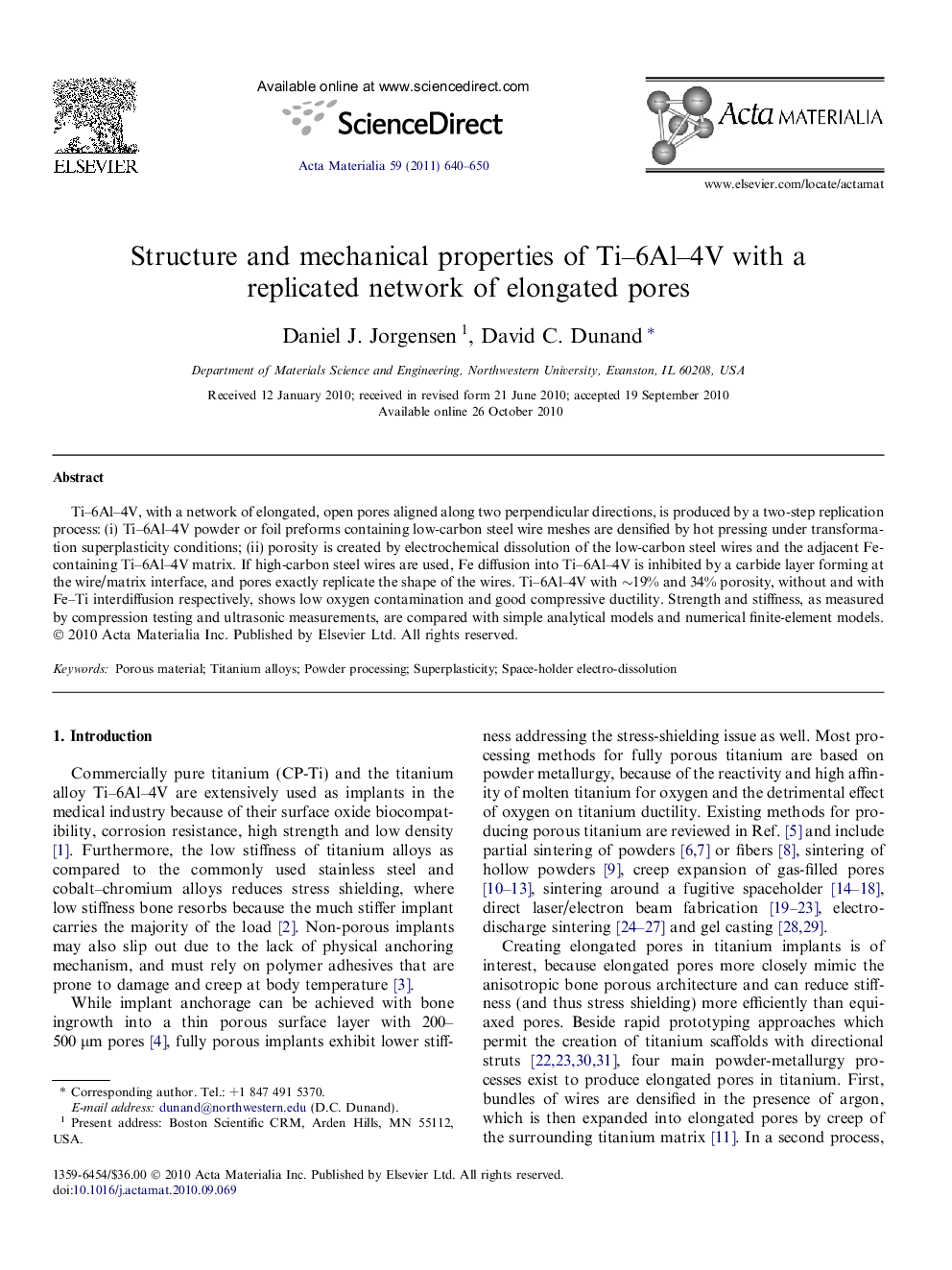| Article ID | Journal | Published Year | Pages | File Type |
|---|---|---|---|---|
| 1447624 | Acta Materialia | 2011 | 11 Pages |
Ti–6Al–4V, with a network of elongated, open pores aligned along two perpendicular directions, is produced by a two-step replication process: (i) Ti–6Al–4V powder or foil preforms containing low-carbon steel wire meshes are densified by hot pressing under transformation superplasticity conditions; (ii) porosity is created by electrochemical dissolution of the low-carbon steel wires and the adjacent Fe-containing Ti–6Al–4V matrix. If high-carbon steel wires are used, Fe diffusion into Ti–6Al–4V is inhibited by a carbide layer forming at the wire/matrix interface, and pores exactly replicate the shape of the wires. Ti–6Al–4V with ∼19% and 34% porosity, without and with Fe–Ti interdiffusion respectively, shows low oxygen contamination and good compressive ductility. Strength and stiffness, as measured by compression testing and ultrasonic measurements, are compared with simple analytical models and numerical finite-element models.
